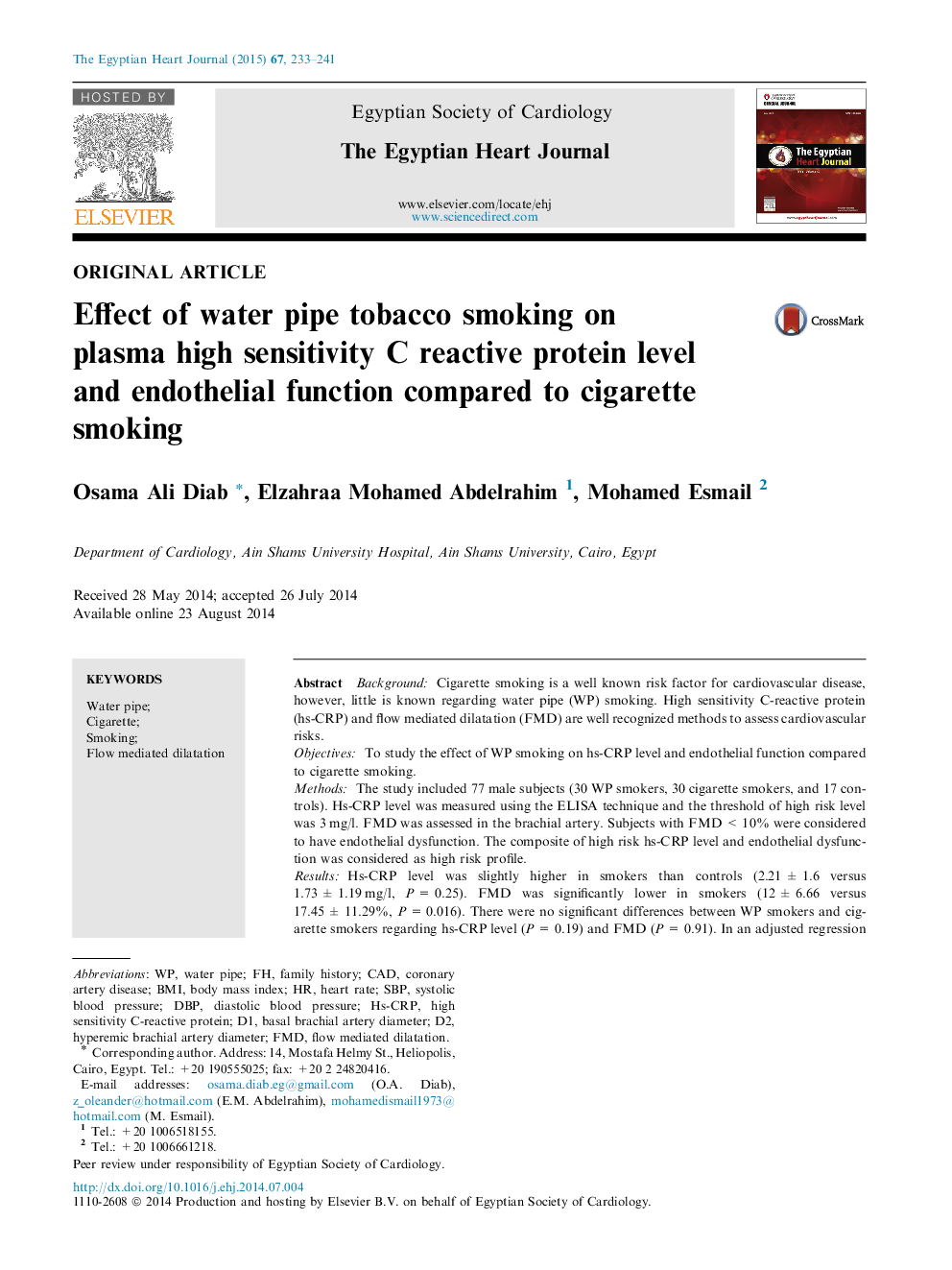| Article ID | Journal | Published Year | Pages | File Type |
|---|---|---|---|---|
| 2910579 | The Egyptian Heart Journal | 2015 | 9 Pages |
BackgroundCigarette smoking is a well known risk factor for cardiovascular disease, however, little is known regarding water pipe (WP) smoking. High sensitivity C-reactive protein (hs-CRP) and flow mediated dilatation (FMD) are well recognized methods to assess cardiovascular risks.ObjectivesTo study the effect of WP smoking on hs-CRP level and endothelial function compared to cigarette smoking.MethodsThe study included 77 male subjects (30 WP smokers, 30 cigarette smokers, and 17 controls). Hs-CRP level was measured using the ELISA technique and the threshold of high risk level was 3 mg/l. FMD was assessed in the brachial artery. Subjects with FMD < 10% were considered to have endothelial dysfunction. The composite of high risk hs-CRP level and endothelial dysfunction was considered as high risk profile.ResultsHs-CRP level was slightly higher in smokers than controls (2.21 ± 1.6 versus 1.73 ± 1.19 mg/l, P = 0.25). FMD was significantly lower in smokers (12 ± 6.66 versus 17.45 ± 11.29%, P = 0.016). There were no significant differences between WP smokers and cigarette smokers regarding hs-CRP level (P = 0.19) and FMD (P = 0.91). In an adjusted regression model, age (P = 0.002) and cigarette smoking (P = 0.046) were found to be significant predictors for high risk profile, whereas WP smoking did not have a predictive effect (P = 0.91).ConclusionsWP smokers and cigarette smokers had comparable degrees of inflammation and endothelial dysfunction. However, cigarette smoking was a stronger predictor for high risk profile.
